How Close Is Syria To Ukraine
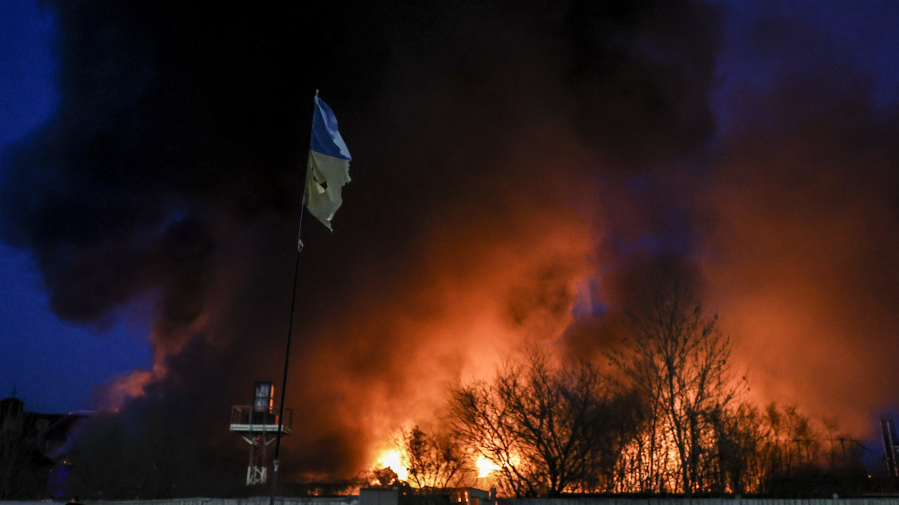
Since the early hours of February 24 marked the commencement of Russia's full-scale invasion of Ukraine and Europe'due south first major war in decades, the world has watched as explosions have reverberated beyond Ukraine's majuscule and, eventually, other highly populated cities. In just over a month, the war in Ukraine saw over 5 one thousand thousand refugees flee to other countries and another vii meg become internally displaced inside Ukrainian borders. Between February 24 and May 3, 3,193 civilians were killed and another 3,353 were injured.
Beyond efforts to end the war focusing on saving lives and preventing further direct humanitarian devastation, another silent victim of the country'southward burdensome new reality could continue harming Ukrainian communities long later the terminal Russian troops have left: the natural environment.
With every missile explosion, raging fire and edifice collapse, high concentrations of pollutants are being released to permeate the country's water supply, soil and atmosphere. Apart from the environmental consequences of harmful heavy metals, fine particulate matter and toxic gas, experts affirm that these pollutants can also raise the take a chance of cancers, developmental disorders and cardiovascular disease in people.
Ecoaction, a Ukrainian ecology advocacy grouping, recorded virtually 150 ecology crimes committed by Russian federation in the first 47 days of the invasion. "Crimes against the environment are not merely most nature, it's near people," said Ecoaction'south head of environmental crimes Yevhenia Zasyadko in a press release. "This war tin cause many deaths in the future due to polluted h2o. We record soil pollution and mining of our fields. Food security and our fertile soils are in great danger caused past the actions of the occupiers."
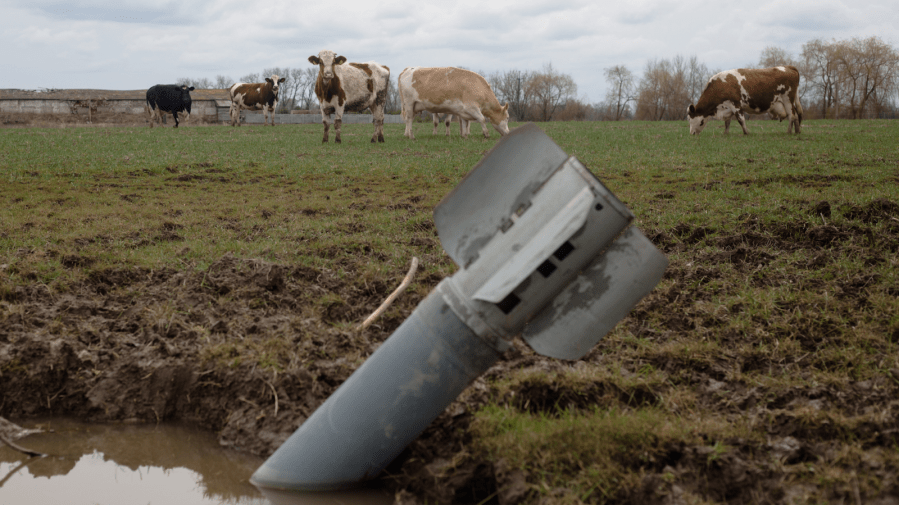
History Can Tell U.s. How War Affects the Surround
Possibly the most infamous example of war'due south negative impact on the environment happened during the Vietnam War, when U.Southward. forces covered 4.v million acres of rainforest and wetlands with "tactical" herbicides, including one known equally Agent Orange. These highly toxic dioxins — persistent organic pollutants that interruption downward in the natural environment very slowly — continue to contaminate soil, h2o, aquatic species and the local food supply in Vietnam more than l years later.
Enquiry on past conflicts suggests that wars tin can lead to meaning losses in biodiversity and impede conservation activities to crusade irreversible environmental impairment. According to a 2018 study, armed conflict is directly correlated with declines in wild fauna beyond even protected parts of Africa. In Mozambique, where ceremonious war from 1977 to 1992 destroyed 90% of Gorongosa National Park's wild elephant population equally both sides poached ivory to finance the war, the species actually evolved to lose their tusks equally information technology gave them a higher chance of survival. In addition to their cultural significance, African elephants play a crucial part in maintaining plant populations and balancing natural ecosystems within their range.
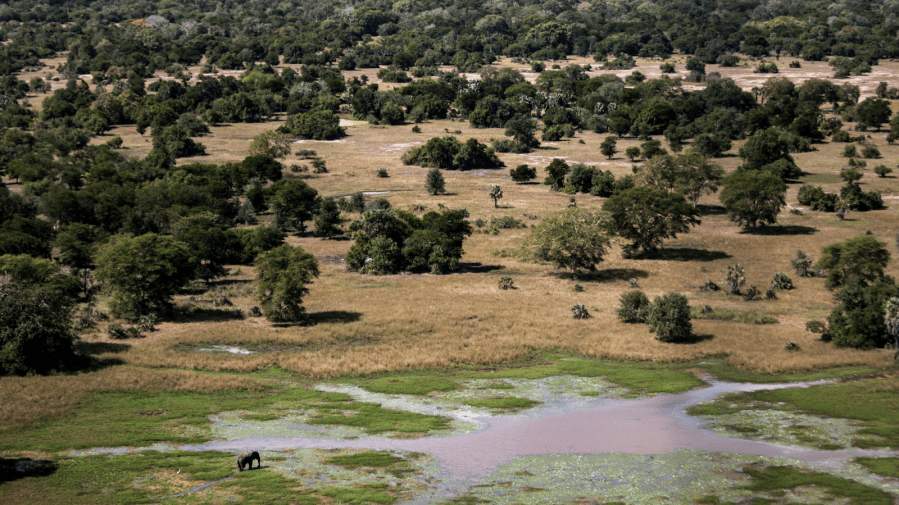
Environmental stressors caused by war, such as land degradation, pollution, floods and lack of access to clean water, can exacerbate tensions and lead to further conflict and competition over precious resource — in fact, studies show that conflicts over water within countries and betwixt countries are already increasing worldwide. Likewise, wars typically result in food shortages and economical insecurity, often driving both civilians and armed forces to rely on natural resources, sensitive habitats and vulnerable wildlife.
Widespread Pollution
Ukraine is a huge agricultural country with the potential to feed a big portion of the earth. Of the country'south total land area of 60 million hectares, most 42 1000000 are classified as agronomical land. The missiles, bombs and tanks that Russia brought onto Ukrainian soil are all filled with waste material, delivering polluting contaminants to land normally used for agricultural purposes. These pollutants don't but impact crop production now, but volition hinder futurity generations one time it comes time to rebuild.
Apart from what Russian federation is bringing into Ukraine, it'due south also necessary to consider the chemical plants, factory storage facilities, oil deposits, coal mines and gas lines that were already there. These industrial sites can release formidable levels of pollution if they're damaged. Similarly, the fires formed from missile strikes and other destructive activities have consequences that include air contamination and water runoff contagion.
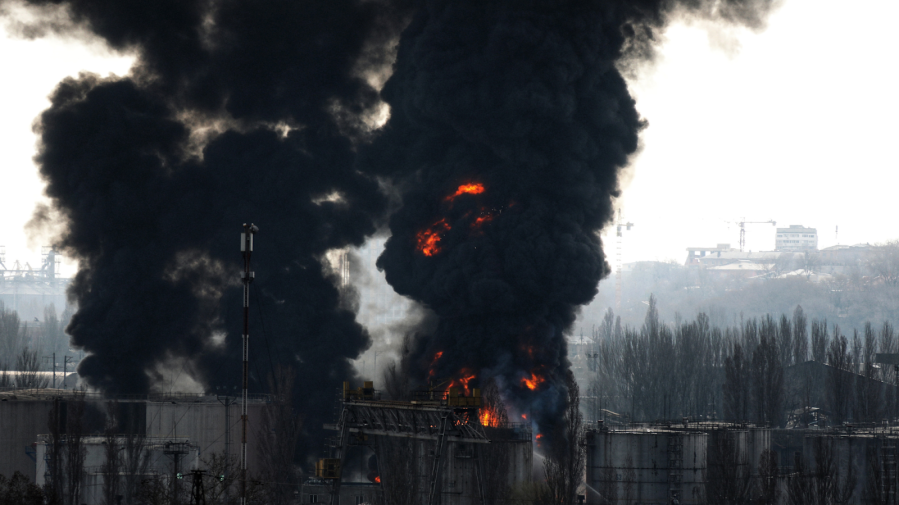
When Russia seized Chernobyl, the now-abased site of the worst nuclear disaster in world history, scientists and civilians alike waited with bated jiff equally soldiers dug trenches in the highly radioactive soil, flew jets over restricted airspace and took workers hostage at gunpoint. Impairment to these nuclear waste storage facilities could produce sizable radioactive contagion, locally and far beyond the site's borders. Russia'southward invasion also marked the first time in history that a nation's war strategy included occupying a nuclear establish, painting a grim picture of a time to come where every nuclear plant could be used as a pre-installed nuclear bomb.
Threats to Biodiversity and Habitats
The Blackness Sea Biosphere Reserve, one of the largest nature reserves in the state, lies on the southern coast of Ukraine. A protected sanctuary for migrating birds and vulnerable species, over 700 types of flowering plants and three,000 species of invertebrate animals take refuge in its 220,000 acres' worth of littoral waters and wetlands.
The territory of this UNESCO-designated reserve, now occupied by Russian troops, has already suffered massive fires due to fighting near the city of Kherson. It still isn't clear how much of the habitats there have been destroyed by active battles and the weight of military vehicles encroaching over the landscape, merely the initial fires were large enough to be detected from space.
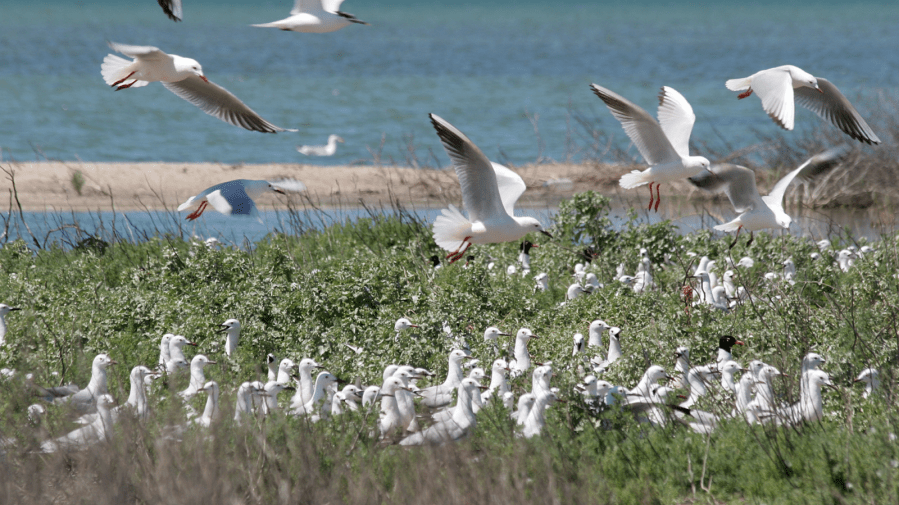
Increasing Deforestation Pressure level
Ukraine is ordinarily the earth'south biggest producer of sunflower oil, historically generating i-tertiary of the world'southward supply and bookkeeping for almost half of global exports. Sunflower oil has long been used in a wide range of nutrient products every bit a replacement for palm oil, a major driver of deforestation in places like the Amazon rainforest. Equally the war causes exports to tank, some desperate companies are because going dorsum to palm oil to maintain production.
The invasion has likewise presented timber supply concatenation challenges for structure (Russia is the largest exporter of lumber and seventh biggest exporter of wood products worldwide), putting additional pressure on the illegal logging manufacture elsewhere. The Woods Stewardship Quango, which provides the globe's leading certification process for sustainably sourced forest products, has likewise suspended all trading certificates in Russian federation.
According to Ukraine's Ministry of Free energy and Environment Protection, over 1,500 Russian missiles had been launched at the country as of mid-April. Unabridged cities have been destroyed and others have been severely damaged. Once the Ukrainian people begin to restore infrastructure post-war, most (if not all) of the construction materials will be sourced from the country itself. A potential increase in wood, rock and other resource extraction could take an even further cost on the already-damaged natural environment.
What the State of war Means for the Future of Environmental Research
It's no secret that war uses upward a tremendous amount of energy. Moving troops and heavy equipment, planes and missiles — all take upwardly oil and fuel that emit greenhouse gasses equally they burn. Already, the war in Ukraine has risen global oil prices to celebrated levels, which in turn drives upward costs for consumer products like food, fertilizer and electronics.
As countries around the world reduce dependency on Russian imports, international collaborations between climate scientists are also feeling the tension. Russia controls a substantial portion of the Chill coastline and ocean territory, where some of the world's almost crucial research on carbon emissions also takes place. Now, this research has come to a detrimental pause as scientists stop any scientific association with Russian researchers.
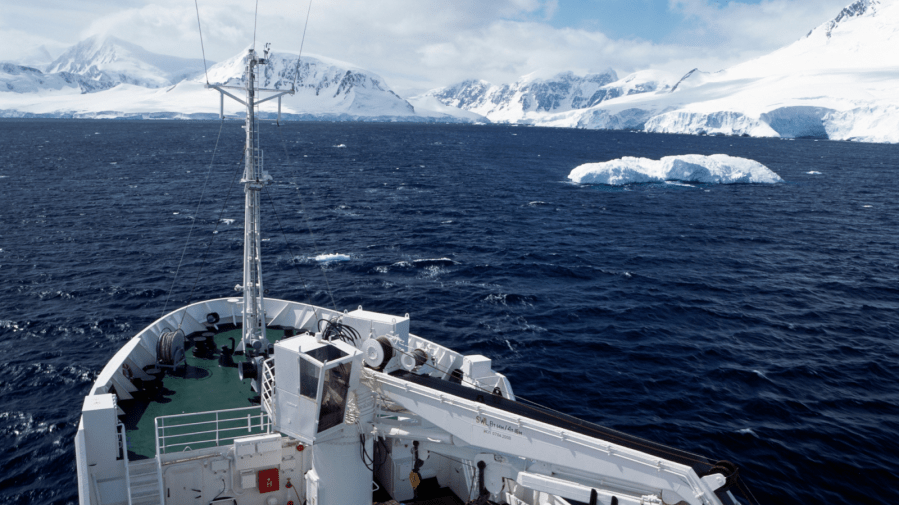
Russian scientists were also banned from the Arctic Science Summit Week in Norway, an Chill-research coming together hosted by the International Arctic Science Committee, responsible for coordinating international research in the Arctic. Organizers for the upshot, Jørgen Berge and Geir Gotaas, told The Wall Street Journal that, while they knew barring researchers from Russian organizations would complicate research efforts, they felt that they needed to take activity in calorie-free of the conflict. "Nosotros are—as e'er—strong supporters of scientific collaboration, but in the current state of affairs the scientific benefits of maintaining official links with Russian institutions are outweighed by the need to accept a articulate stand confronting the actions of the Russian government," they said.
Just earlier the initial attacks, a global consortium of permafrost scientists was preparing to embark on a multi-twelvemonth, Arctic-broad monitoring try that would have provided vital information on how the region is warming. Sue Natali, Arctic program manager for the Woodwell Climate Research Centre, told Fourth dimension magazine that at least half of their work would accept taken place in the Russian portion of the Arctic. Every bit the region is as well warming 4 times faster than the rest of the world, that data is zip brusque of essential. "We cannot but ignore what is happening with permafrost in Russia," she said. "It'southward a massive blind spot."
Scientists who study permafrost (rock or soil that has remained frozen for at to the lowest degree two years) in the Chill do so in order to learn more than about the by climate and how frozen earth changes — and may continue to change — over time. Information technology'southward difficult to say how the lack of shared data between Russian researchers and the rest of the scientific customs will touch the future of climate research, but information technology certainly has the potential to set information technology back.
Source: https://www.ask.com/culture/environmental-impact-war-in-ukraine?utm_content=params%3Ao%3D740004%26ad%3DdirN%26qo%3DserpIndex&ueid=12bc33c3-2f5e-4b87-bd6c-4e87565756e8

0 Response to "How Close Is Syria To Ukraine"
Post a Comment